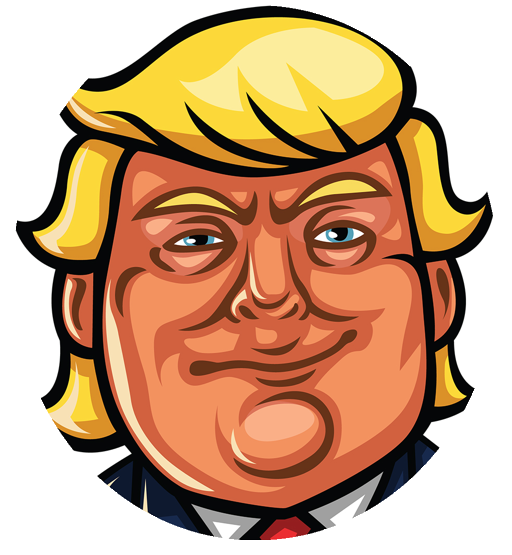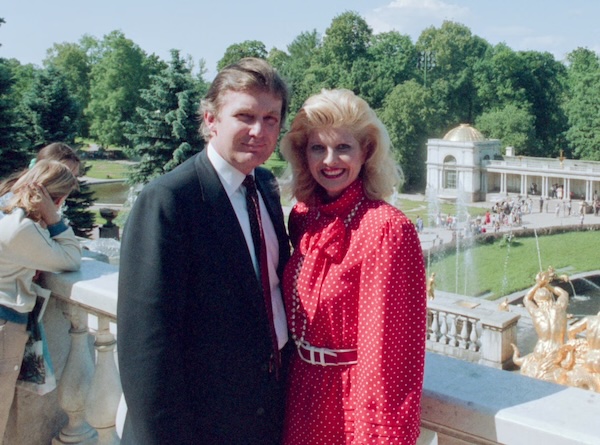The story begins in March 1986, when Soviet ambassador Yuri Dubinin and his daughter Natalia walked into Trump Tower and requested a meeting with Donald Trump. Natalia told Politico years later that their mission was to “hook” the assumed billionaire, and “Trump melted at once.”
This was the beginning of the KGB’s recruitment of Donald Trump.
The story as it’s told here and on this website is composed of interviews with Soviet / Russian nationals and former KGB agents, reports by reputable sources, and Donald Trump’s own book.
In the mid-1980s, as sympathy for the Soviet Union was waning, KGB head Vladimir Alexandrovich Kryuchkov began exploring new strategies for the intelligence agency to recruit assets abroad.
Primarily, agents were directed to use flattery on potential assets and rely more heavily on “material incentives,” i.e. money, to bring them on board.
Most importantly, they were told to focus on U.S. targets of value – like Donald Trump – who may be able to “actively influence” foreign policy in favor of the Soviet Union.
In The Art of the Deal, Trump writes that he sat next to Yuri Dubinin at a luncheon in 1986 (some time after the Trump Tower meeting). There, Dubinin completed the first stage in KGB recruitment, offering Trump a “material incentive” he couldn’t refuse.
The incentive, according to Trump’s own book: “a large luxury hotel, across the street from the Kremlin, in partnership with the Soviet government.” But first, Dubinin would need Trump to meet with some of his associates in Moscow, the second stage of recruitment.
On the Fourth of July, 1987, Donald and Ivana Trump checked into the Intourist hotel in Moscow, a facility allegedly operated and surveilled by the KGB, across the street from the Kremlin.
As far as Trump knew, the purpose of this trip – which was paid for by the Soviet government – was to meet with officials from the country’s tourist agency. But the agents he met with weren’t interested in tourism.
The conversation centered on deals with the Politburo, the highest committee within the Kremlin, and how Trump might be of assistance to the KGB.
The operatives fed Trump common KGB talking points and went to great lengths in their efforts to flatter him. They knew from their intel that he was psychologically vulnerable and that flattery was his weak spot.
The KGB used this to their advantage and pretended to be “immensely impressed” by him, according to one former agent. They told him “it’s people like him who could change the world.”
They even went as far as to suggest that he could become president someday.
Upon Trump’s return to the U.S., a shady, elite (i.e. very expensive and therefore exclusive) intelligence magazine called Executive Intelligence Review published a story confirming the Soviet Union had hopes for a Trump presidency:
Back home in New York, Trump dove head-first into public political commentary.
He even spent $94,000 on newspaper ads attacking NATO and accusing our allies in Japan and Saudi Arabia of exploiting us.
Russia reportedly celebrated their success in acquiring Trump’s support, who they allegedly gave the codename “Krasnov.”
They also celebrated because Donald Trump had done the unthinkable: he’d started teasing his first presidential campaign and scheduled an official announcement in November.
Let’s wrap up with some “fun” facts.
ONE: Also involved in planning Trump’s July 4th trip to Moscow was Vitaly Churkin. He stayed in touch with Trump, and in 2006 he became Russia’s ambassador to the United Nations.
Ten years later, Churkin shocked governments around the world by randomly defending Donald Trump’s 2016 campaign at the U.N. despite no one there having criticized the Republican candidate.
One month after Trump was inaugurated, Churkin died suddenly, and he took the details of his relationship to the asset-turned-president with him. It’s believed that Churkin might have been murdered, but Trump’s State Department blocked his autopsy.
TWO: Churkin was the fifth Russian diplomat to die unexpectedly after Trump won the 2016 election.
THREE: At the time of Donald Trump’s recruitment, 34-year-old Vladimir Putin worked for the KGB.
FOUR: In 2018, eight GOP lawmakers spent the Fourth of July in Moscow, meeting with officials from the Russian government. One of them was later accused of helping Russia influence the 2020 election.
FIVE: Earlier this year, a second former KGB official confessed to recruiting Donald Trump.


